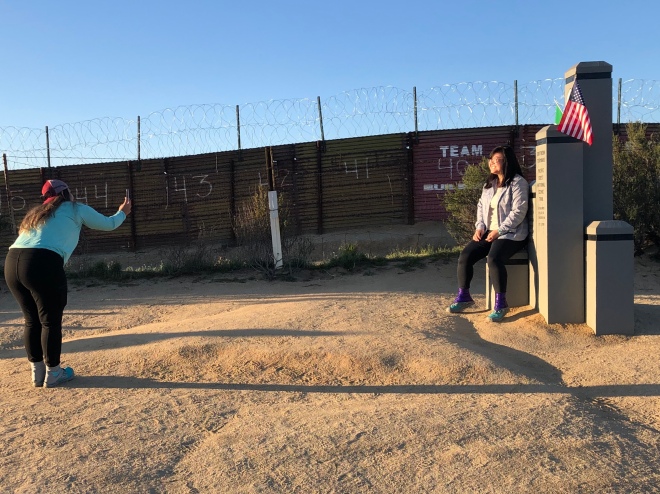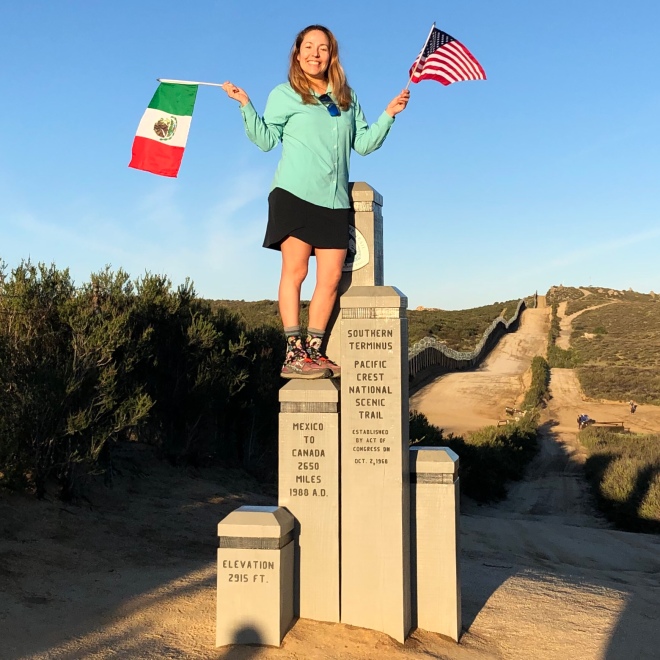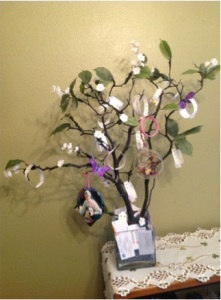Imagine learning about a challenge that somehow calls to you. It might be a mountain you’d like to climb, a sea you’d like to sail, a trail you’d like to hike. You research, study, plan and execute. You make arrangements, your life is changed, career perhaps put on hold, relationships interrupted. But that challenge is before you, like a beacon. It becomes your cause. You work toward it. And the day to set forth is finally upon you.

As the PCT Southern Terminus hosts for the 2019 season, we are fortunate enough to see hikers who dreamed of a challenge on the Pacific Crest Trail. They have worked for this moment of arriving at the Southern Terminus. This is the traditional trailhead for the northbound thru-hikers. Some come by bus or a hired car, some are dropped off by trail angels, friends or parents; and some of those parents are in tears, scared of the dangers they fear may lay ahead for their child. Some come to solo, some will hike with friends. It seems to us that even strangers make friends quickly. They mostly all have smiles on their faces. Some admit nervousness but everyone seems excited. Many take in the scene and linger and take pictures for up to an hour. Others take a quick selfie and walk directly to the trail, determination already set in.
It’s exciting to see the hikers leave. Each time someone takes off, we think he or she takes a little piece of us as we wish we, too, could be on the trail. But hosting at the Southern Terminus gives us a great opportunity to be part of so many people’s incredible experiences. They are engaging in a challenge they once could only dream about.

Getting just the right picture is serious business for PCT thru-hikers. Many of the hikers will linger for an hour taking shots that capture the moment, embracing the magic.
Our main focus is to reinforce Leave No Trace (LNT) principles for hikers, day and section hikers, included. The impact hikers have on the trail can be significant, especially the first 100 or so miles. This islikely one of the most used sections. With each hiker we meet, we try to discuss concepts that include respecting the rich riparian areas along the trail, including the ethic of pitching tents 200 feet away from water. This allows plants to grow and animals a chance to get water and thrive in the desert. We discuss the importance of packing out used toilet paper. We speak about fire safety and about respecting wildlife and each other. We also illustrate what is the best ground type for setting up camp. Another priority is reinforcing safety education as part of the PCTA’s “safe and responsible use” campaign. We go over the water report and where to access it. We advise worried hikers on what they need to know for their first miles on the trail. Additionally, as part of an effort to assess and improve the permitting system, we ask if hikers have permits and if they have come to the trailhead on their assigned date. We’re volunteers who care about sustainable use, and we’re not here to enforce the permits. We are gathering accurate information so that the U.S. Forest Service and the PCTA can meaningfully assess how the federal inter-agency permit system is working. We encourage all hikers to be honest with their responses.

This has also been a wonderful opportunity to meet, work with and learn from the staff of both the U.S. Forest Service and the PCTA. These organizations collaborate to make this volunteer position possible. We are learning that there is nuance and detail in forest management well beyond what we imagined.
If we all could follow LNT principles and commit to becoming good stewards of the PCT and the outdoors, we will preserve the trail’s legacy while assuring its continued existence. It’s our great hope that as all of you in the Class of 2019 travel north, you will enjoy your time, fall in love with the trail and join us in stewarding it for future generations of hikers.


